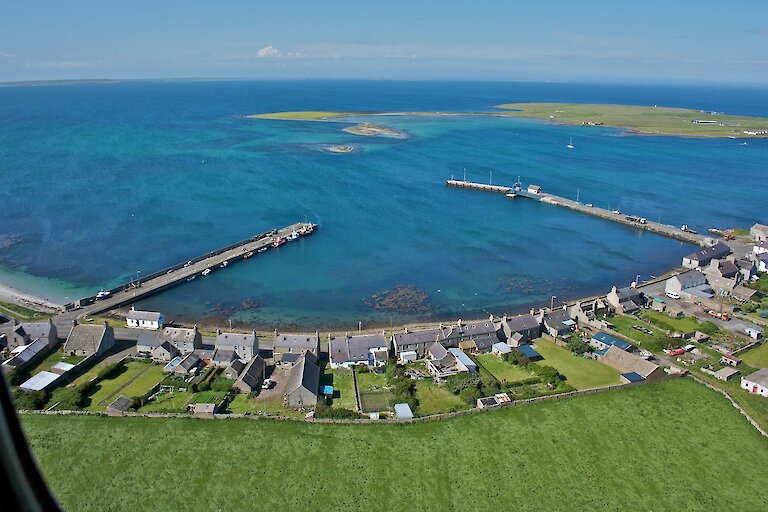The island has three 'limbs' pinched at the centre by three large bays: St. Catherine's, Mill Bay and Bay of Holland. The main body of the island has a low ridgeline which runs roughly north-west to south-east. Stronsay is generally low lying, its highest areas reaching just over 40m above sea level. Much of the interior is settled and farmed - Whitehall being the main village.
Orkney’s first known Mesolithic settlement has been identified at Links House in Stronsay, while Mesolithic flints have been identified at other sites on the island, such as at the Sands of Odie. There are no known Neolithic settlement sites on Stronsay, but there are seven Neolithic tombs. Bronze age sites include 22 burnt mounds and some evidence of field dykes. The dramatically situated broch at Lamb Ness is one of 13 Iron Age sites.
Stronsay and neighbouring Papa Stronsay, both have a rich industrial heritage having beenheavily involved in the kelp industry in the 18th and 19th centuries. The main settlement, Whitehall, developed during the herring fishing boom of the early 1900s. During this time, 4000 people arrived on the island each year and the economy prospered.
Stronsay’s important wildlife habitats include upland heath, maritime heath, maritime grassland, links, coastal sand dunes, machair, lowland fens, lochs and strandline. There are outstanding areas of cliff and moorland heath on the Rothiesholm peninsula and coastal heath along much of the southeast coast of the island, from the Vat of Kirbister to Lamb Head. The island supports species such as breeding wildfowl, waders and terns, Otters and plants including Frog Orchid and Northern Yellow cress. The south-east coast of the island has a significant population of breeding Black Guillemots and wintering Purple Sandpipers. The northern coast of Stronsay and small holms off this coast are important breeding sites for Grey and Common Seals.
 Stronsay
Stronsay





